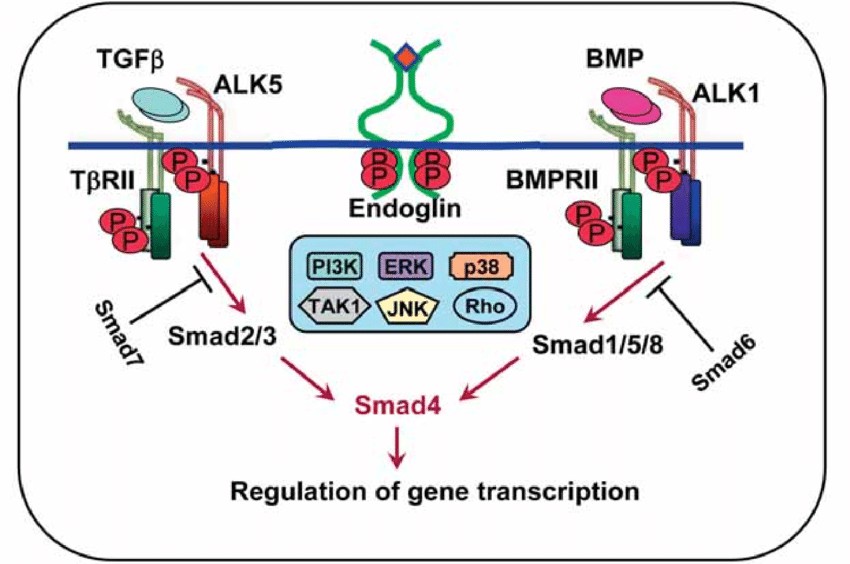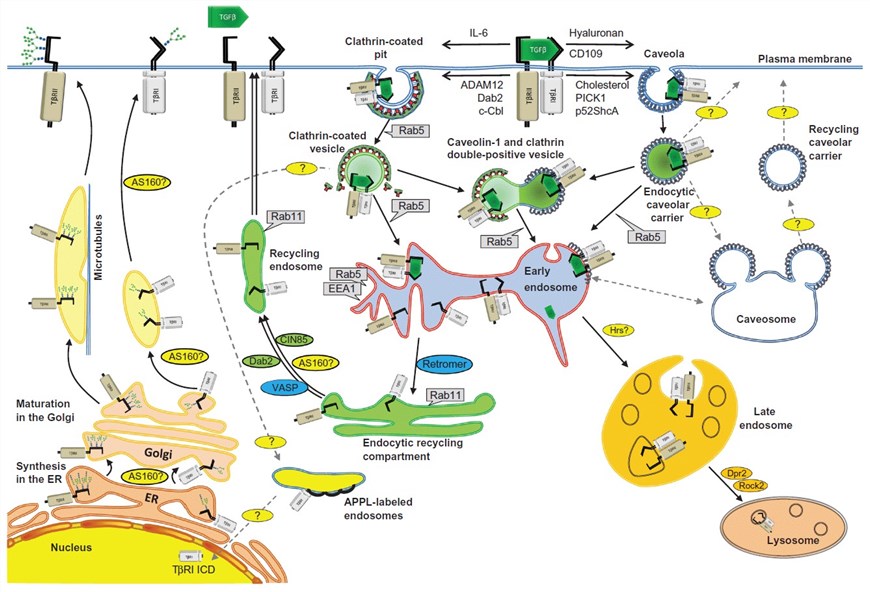TGF-beta Family Receptor
Available Resources for TGF-beta Family Receptor Research
At Creative BioMart, we provide an extensive range of products associated with the TGF-beta family receptor. Our diverse offerings include recombinant proteins, protein pre-coupled magnetic beads, and cell and tissue lysates, enabling researchers to access the necessary tools for their studies. Furthermore, our customizable services are designed to address your specific requirements and ensure you receive the most suitable product for your needs.
In addition to our comprehensive product line, we offer a wealth of information on the TGF-beta family receptor. Our resources cover various aspects, including involved pathways, protein function, interacting proteins, related articles, research areas, and other pertinent topics. These resources serve as invaluable references, empowering researchers to deepen their understanding of the TGF-beta family receptor and its significance in physiological processes.
Our Featured Products
| Cat.# | Product name | Species | Source (Host) | Tag |
|---|---|---|---|---|
| ACVR1-526H | Active Recombinant Human ACVR1, Fc-tagged, Biotinylated | Human | Human Cell | Fc |
| Acvr1-775M | Active Recombinant Mouse Acvr1 protein(Met1-Glu123), His&hFc-tagged | Mouse | HEK293 | C-His&hFc |
| Tgfbr3-7042M | Recombinant Mouse Tgfbr3, His tagged | Mouse | Human Cell | His |
| ACVR1B-645H | Active Recombinant Human ACVR1B protein, His-tagged | Human | HEK293 | His |
| ENG-63H | Active Recombinant Human ENG protein, hFc-tagged | Human | HEK293 | hFc |
| Eng-3289M | Active Recombinant Mouse Eng protein, His-tagged | Mouse | HEK293 | His |
| TDGF1-3170H | Recombinant Human TDGF1, GST-tagged | Human | E.coli | GST |
| TGFBR1-2346H | Active Recombinant Human TGFBR1 protein, His&hFc-tagged | Human | HEK293 | His&hFc |
| TGFBR2-152H | Recombinant Human TGFBR2, Fc-His tagged | Human | Human Cell | Fc/His |
| TGFBR2-8814C | Recombinant Cynomolgus TGFBR2, Fc tagged | Cynomolgus Monkey | Human Cell | Fc |
About TGF-beta Family Receptor
The TGF-beta (Transforming Growth Factor-beta) family receptors are a group of transmembrane proteins that play a crucial role in mediating the signaling of TGF-beta ligands. The TGF-beta superfamily includes TGF-beta, BMPs, activins, inhibins, and other related ligands. The receptors of this family are classified into two types: type I and type II receptors. Here's an introduction to the TGF-beta family receptors:
Type I Receptors
- Type I receptors, also known as activin receptor-like kinases (ALKs), are serine/threonine kinases.
- They consist of a conserved intracellular kinase domain and an extracellular ligand-binding domain.
- Type I receptors are activated by ligand-induced complex formation with type II receptors.
- Upon ligand binding, the type II receptor phosphorylates specific serine and threonine residues in the GS (glycine-serine) domain of the type I receptor, resulting in its activation.
Type II Receptors
- Type II receptors are also serine/threonine kinases and are responsible for ligand recognition and binding.
- They have a conserved intracellular kinase domain and an extracellular domain involved in ligand binding.
- Type II receptors form complexes with type I receptors upon ligand binding.
- The binding of ligands induces the assembly of a heterotetrameric receptor complex composed of two type II receptors and two type I receptors.
 Fig.1 TGF-beta family signalling pathways. (Jokanović M, et al., 2012)
Fig.1 TGF-beta family signalling pathways. (Jokanović M, et al., 2012)
Ligands (TGF-beta and BMPs) bind to the receptors and induce heteromeric complex formation between specifi c type II and type I receptors. Endoglin, an auxilliary receptor, is able to modulate and regulate both TGF-beta and BMPs effects. The type II receptors phosphorylate the type I receptors, leading to their activation. Subsequently, phosphorylation of receptor-regulated (R) Smads occur, which form complexes with Smad4 (common Smad) and translocate into the nucleus where interact with transcription factors and regulate gene responses (canonical Smad signaling pathway). Inhibitory Smads 6 and 7 inhibit receptor activation of R-Smads. In addition, the activated type I receptors can signal through non-Smad pathways (PI3 kinase, mitogen activated protein kinases (MAPK) ERK, p38, TAK1, and Jun kinase, and GTP-ase Rho).
Role of TGF-beta Family Receptor in Cellular Signaling
- Ligand Binding and Receptor Complex Formation
- TGF-beta family ligands bind to the extracellular domains of type II receptors.
- This binding promotes the recruitment and assembly of type I receptors into a complex with type II receptors.
- The ligand-induced receptor complex brings the type I and type II receptors into proximity, allowing for the phosphorylation and activation of the type I receptor.
- Intracellular Signaling Pathways
- Once activated, the type I receptor initiates intracellular signaling cascades.
- The activated type I receptor phosphorylates specific downstream signaling molecules known as SMAD proteins.
- The phosphorylated SMADs form complexes with a common SMAD (Co-SMAD) and translocate into the nucleus.
- In the nucleus, the SMAD complexes act as transcription factors, regulating the expression of target genes.
The TGF-beta family receptors are critical for transmitting the extracellular TGF-beta ligand signal to the intracellular space. They activate downstream signaling pathways, primarily through the phosphorylation of SMAD proteins, leading to the regulation of gene expression. The TGF-beta signaling pathway has diverse roles in various biological processes, including embryonic development, tissue homeostasis, immune response, and wound healing. Dysregulation of TGF-beta signaling has been implicated in numerous diseases, such as cancer, fibrosis, autoimmune disorders, and cardiovascular diseases.
 Fig.2 Intracellular trafficking of TGFβ receptors. (Yakymovych I, et al., 2018)
Fig.2 Intracellular trafficking of TGFβ receptors. (Yakymovych I, et al., 2018)
If you have any questions, requirements, or cooperation intentions, please feel free to contact us. We very much look forward to working with you and helping you achieve research and commercial success.
References:
- Yakymovych I, Yakymovych M, Heldin C H. Intracellular trafficking of transforming growth factor β receptors[J]. Acta biochimica et biophysica Sinica, 2018, 50(1): 3-11.
- Jokanović M, Škrbić R. Neurotoxic disorders and medical management of patients poisoned with organophosphorus pesticides[J]. Scripta Medica, 2012, 43(2): 91-98.


